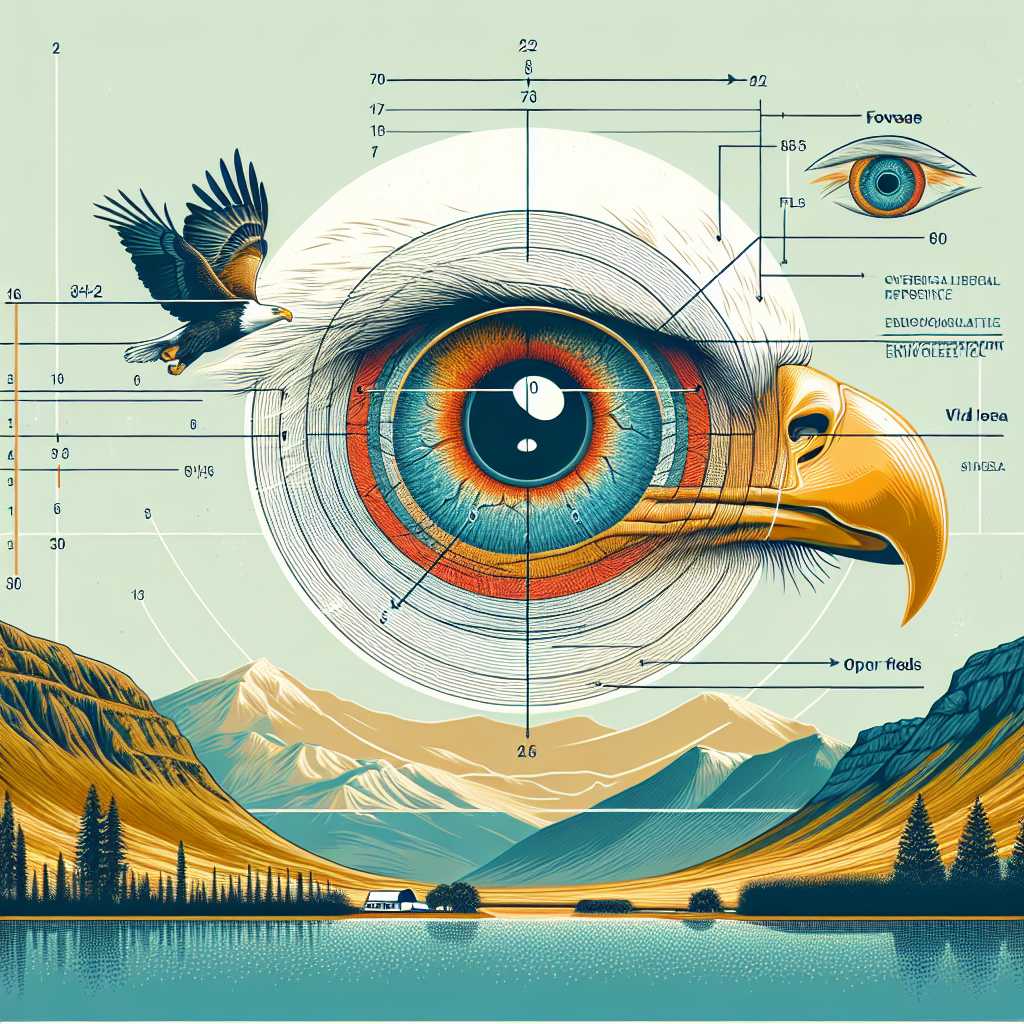Example Article
The Extraordinary Visual Acuity of Eagles
Eagles are renowned for their remarkable eyesight, which is among the sharpest in the animal kingdom. Their eyes possess a high density of photoreceptor cells, allowing them to resolve fine details at distances where humans would be nearly blind. This superior vision is critical for spotting prey from hundreds of metres in the air. Unlike humans, eagles have two foveae (the part of the eye responsible for sharp central vision) per eye, providing them with both forward and sideways focus simultaneously.
This dual-focus system grants eagles an almost panoramic view combined with pinpoint accuracy. They can detect subtle movements on the ground from great heights, giving them a predatory advantage that few other species possess. Furthermore, their eyes are large relative to their body size, enabling more light to enter and enhancing their ability to see in varying light conditions.
Adaptations such as a specialised retina and a flattened lens also contribute to their extraordinary visual range. The combination of these features means eagles can identify prey such as fish or small mammals while soaring at altitudes exceeding 300 metres. This visual prowess is not merely a biological curiosity but a fundamental aspect of their hunting success.
How Eagle Vision Influences Hunting Strategies
The exceptional eyesight of eagles directly informs their hunting techniques. Typically, they employ a ‘sit-and-wait’ strategy or engage in soaring flight to scan vast territories for prey. Their ability to detect movement from afar allows them to conserve energy by targeting specific animals instead of engaging in random pursuits.
Once prey is singled out, eagles execute a high-speed dive known as a stoop, reaching speeds up to 160 km/h. The precision afforded by their eyesight enables them to calculate trajectories and timing perfectly, ensuring that they strike with lethal accuracy. This hunting efficiency reduces wasted effort and increases the likelihood of a successful catch.
Moreover, different eagle species have adapted their visual hunting strategies to suit their ecological niches. For instance, fish eagles have developed the ability to detect underwater movement, adjusting for refraction at the water’s surface. Forest-dwelling eagles rely on keen vision to navigate between dense foliage and identify prey hiding within shadows.
The Evolutionary Significance of Eagle Eyesight
The evolution of eagle eyesight is a quintessential example of natural selection driving specialised adaptations. Over millions of years, selective pressures favoured individuals with enhanced visual capabilities that improved hunting success and survival rates. This evolutionary trajectory highlights the interplay between physiology and environmental demands.
Eagle eyesight serves as an evolutionary benchmark for studying sensory adaptations across raptors and other predatory birds. By comparing retinal structures and visual acuity among species, researchers gain insights into how different habitats and prey types influence sensory development. This knowledge extends beyond ornithology, informing broader biological principles related to vision and perception.
Furthermore, understanding eagle vision has practical implications for conservation efforts. Habitat degradation can impair an eagle’s ability to hunt effectively if visibility is reduced by pollution or deforestation. Protecting clear skies and open landscapes thus becomes critical not only for preserving eagle populations but also maintaining ecological balance.
Conclusion: Vision as the Keystone of Eagle Mastery
Eagles exemplify how evolutionary refinement of sensory organs can define an apex predator’s lifestyle. Their extraordinary eyesight underpins every aspect of their behaviour—from hunting tactics to habitat selection—demonstrating that vision is not merely about seeing but about interpreting and interacting with the environment at an exceptional level.
By appreciating the complexity and significance of eagle vision, we gain a deeper understanding of these magnificent birds beyond their symbolic status. It reminds us that mastery in nature often hinges on subtle biological advantages developed over millennia.
In essence, the eagle’s gaze is both a marvel of natural engineering and a testament to the power of evolutionary innovation in shaping life on Earth.
Notes
- Eagles can see up to eight times farther than humans.
- They have two foveae per eye allowing simultaneous forward and lateral focus.
- Eagles’ stoop diving speed can reach up to 160 km/h.

